DISCOVER THE WONDERS OF THE EAST
The east coast of Iceland is home to the country's largest forest, lush farmlands and a range of small fjords and islands. Thanks to the East's many natural harbors, a variety of fishing villages, and small seaside communities border the coast.
Impressive magma chambers filled with colorful mineral deposits can be seen and visited along the eastern coast. In the summer months, the east of Iceland becomes a creative hub for artists and young people from around Iceland and abroad, as a variety of music and art festivals have been popping up and expanding steadily in recent years.
Seyðisfjörður is the landing place for the Smyril Line ferry from Europe, and home to a vibrant art scene emerging to the backdrop of a 19th century village. Indeed, the East has a rich artistic history, as the landscape in the region is truly a rich palette. One of Iceland's most beloved artists, the painter Jóhannes Sveinsson Kjarval, grew up in the town of Borgarfjörður eystri, where he created some of his most memorable work and where a museum now commemorates his life.
The East is also home to several interesting arts and music festival throughout the year. In the southeast, the Vatnajökull Glacier—Europe's largest—is an imposing, spectacular sight.
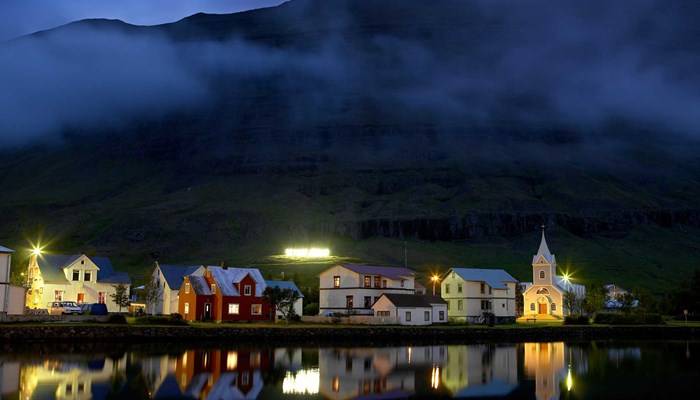
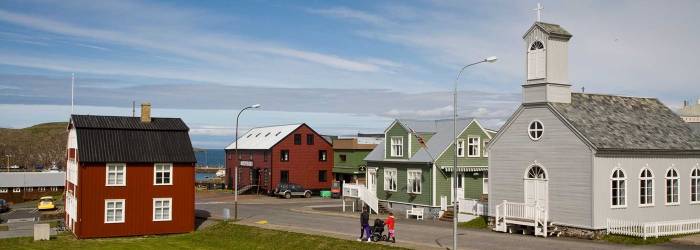
SAGALAND
West Iceland is one of Iceland's most geologically diverse regions. Its natural wonders are a nearly exhaustive sampling of all that Iceland has to offer, ranging from slumbering volcanos and majestic waterfalls to a variety of flora and wildlife.
West Iceland is a world where culture, nature and history complement each other, creating a unique experience. This vast area consists of fjords, valleys, craters, glaciers and volcanoes. Great hikes are found around Akranes and Hvalfjörður, with the mountain Akrafjall and the highest waterfall in Iceland Glymur less than an hour from Reykjavík. Visit the homestead of medieval writer Snorri Sturluson at Reykholt, and see the man-made geothermal bath in which he must have often allowed his mind to wander. Or learn about the awe-inspiring Viking poet Egill Skalla-Grímsson.
These are only a few examples of the interesting sites that can be found all over West Iceland, where nature is inextricably linked to the story of the people. Just look around, history is everywhere to be discovered. The magnificent landscape and wildlife at Snæfellsjökull National Park, Iceland's only national park that reaches into the sea. The mystical volcano Snæfellsjökull Glacier has inspired artists and poets through the centuries, being one of seven greatest energy centres on Earth. Snæfellsjökull is the setting of Jules Verne's Journey to the center of the Earth.
Snæfellsnes offers beautiful nature and was given the Earth Check award for being a sustainable community in 2008. From Snæfellsnes you can cross over to Dalir, cradle of the great explorers Eirík the Red and his son, Leif the Lucky, the first European to set foot in America. The short distances between popular destinations make it possible to enjoy the area at a comfortable pace all year round, so remember to slow down in West Iceland.
EXPERIENCE THE PEACE AND QUIET OF THE WESTFJORDS
One of Iceland's best kept secrets is undoubtedly the country's north-west corner, usually known as the Westfjords. Isolation has preserved the region in relatively unspoiled wilderness. Largely uninhabited, Iceland's Westfjords are frequently distinguished by travel guides as a destination of excellence, and are a must-see for any serious explorer.
Hornstrandir are located in the Westfjords' northwestern corner, an uninhabited peninsula and nature reserve that is a haven for the Arctic fox as well as a variety of birdlife. The bird cliff Látrabjarg, on the west side of the Westfjords, which apart from hosting nearly half of the world's population of some bird species, is also the westernmost point of Europe. The spectacular Dynjandi, a set of waterfalls with an accumulated height of 100 meters, is another must-see.
Tradition and heritage play a large role in the region's culture. The strong relation to the ocean is evident in the regional cuisine and folklore is as much alive in the Westfjords as anywhere else in Iceland, with museums dedicated to sorcery and witchcraft, as well as monsters and creatures from the sea.
The Westfjords are a true Icelandic wilderness, and are undoubtedly the ideal place for spotting birds, arctic fox, and other unique fauna in their natural habitats.
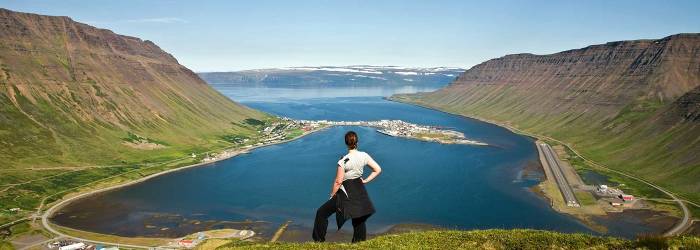
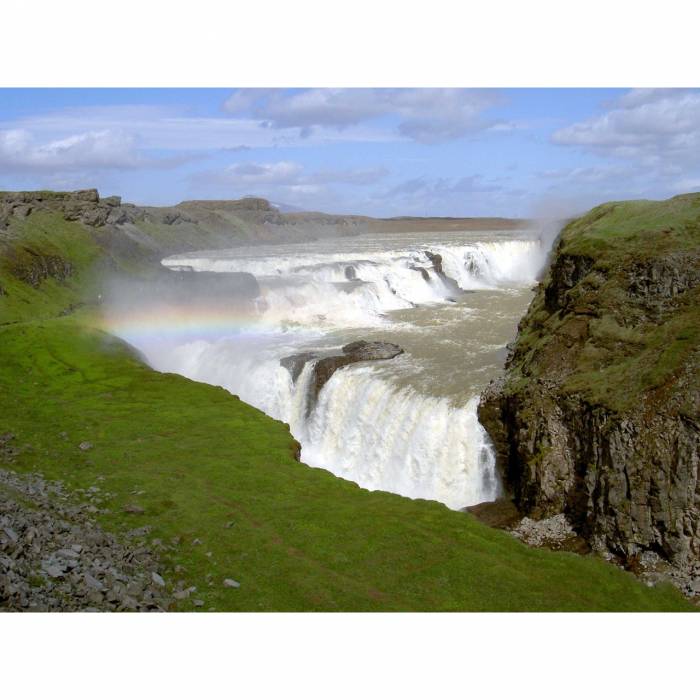
GULLFOSS, GEYSIR AND SO MUCH MORE
Iceland's south coast is home to some of the country's most visited tourist attractions. The coastline itself is renowned for its beauty, and the towns along the coast are famous for their fresh seafood.
From wonderful waterfalls, to great glaciers, the South has it all. With the Golden Circle route, connecting Þingvellir, Gullfoss and Geysir, located in the area, it is a very popular destination for visitors. Further east along the shore, you will find Skógafoss Waterfall, Jökulsárlón Glacial Lagoon, Vatnajökull Glacier, and several other natural wonders.
The South is rich in history and culture. Events from the Sagas are remembered in many ways along the coast, and several museums in the area celebrate Icelandic customs and heritage. With much of the country's agricultural products coming from the area, the South is also a fine testimony to Icelandic restaurant culture.
THE NATURAL BEAUTY OF THE NORTH
The north of Iceland truly is a land of contrasts. Its long valleys and peninsulas are interspersed with mountains, lava fields and smooth hills carved out by rivers. The deep and numerous indentations in the coast of the North are at times lush with vegetation, at others barren. As one nears the Arctic Circle in the northern latitudes, the midnight sun is invariably awe-inspiring.
The North is home to Iceland's second largest urban area, Akureyri, located in Iceland's longest fjord, the mild-weathered Eyjafjörður. Akureyri, rich in culture and history, has a charming downtown full of late nineteenth century wooden houses. In summer, golfers can take advantage of the midnight sun at the Arctic Open.
Many towns of the North are dedicated to marine life. The Húsavík Whale Museum and the Seal Center in Hvammstangi are two options for visitors. Close by in the northern reaches of the Vatnajökull National Park is the impressive Ásbyrgi Canyon, as well as the Dettifoss Waterfall—the most powerful in Europe. The nearby Lake Mývatn and its surrounding wetlands has an exceptional variety of waterbirds and rock formations.
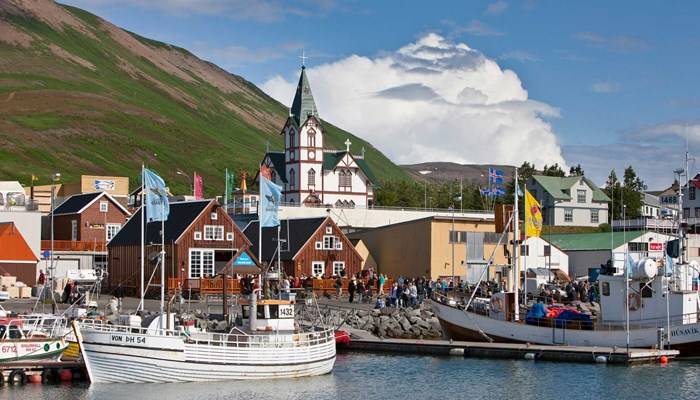
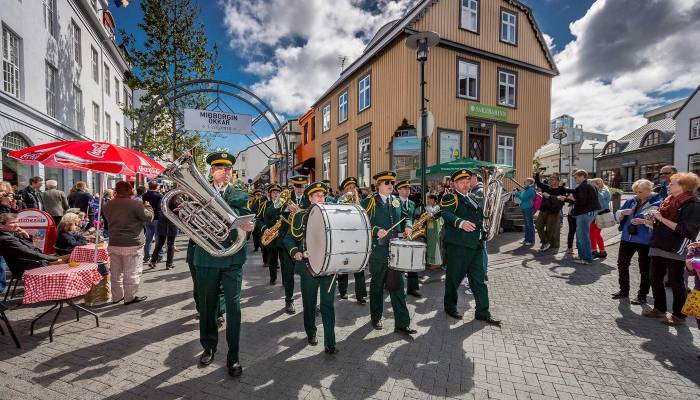
THE LITTLE CAPITAL WITH THE BIG HEART
With a population of 120,000, Reykjavík is not a whirlwind metropolis. Few skyscrapers grace the skyline, traffic jams are rare and faces are familiar. But don't be deceived—a steady beat of energy and events keeps the city alive and pulsing with excitement.
Sunny days feel like spontaneous holidays in Reykjavík. Sunbathers and picnickers fill Austurvöllur, the green square in front of Parliament; locals and tourists alike stroll up and down Laugavegur, the main drag, shopping, stopping for coffee, and people watching. The thirsty jockey for sparse outdoor seating at bars as happy hour rolls around. Crooning buskers line the sidewalk; performance artists stage surprise acts; maybe a marching band appears from the ether. Anything can happen.
Downtown Reykjavík (also known by its postal code as 101) is the nucleus of Iceland's rich culture and arts scene. By day, café-culture rules supreme. A steady hum of conversation keeps the city's several cafés lively. With free wifi and refills on drip coffee being fairly common, Reykjavík's café-goers like to linger until they're sufficiently buzzed on the strong, dark elixir. As day turns into night, people start filing into many of the cities excellent restaurants.
Throughout 101, playful murals and street art testify to the city's sense of creativity and fun. Art galleries such as the Reykjavík Art Museum and the National Gallery showcase the works of classic Icelandic artists, while smaller independent galleries display the projects of cutting-edge, contemporary Icelandic and international artists.
Various museums preserve the culture and history of both the city and the country at large. Designated as a UNESCO City of Literature, Reykjavík is also the core of Iceland’s literary heritage where you'll discover a treasure of literary works and a wealth of talented poets and authors.
Local music is one of the mainstays in Reykjavík's cultural life. Reykjavík's musical acts represent a broad spectrum of musical genres: from bluegrass folk to death metal, rap to lo-fi, punk rock to reggae. Downtown record stores are eager to show off the industriousness of Icelandic musicians, but it's just as easy to experience acts first hand at live concerts. Bars and clubs around 101 regularly host live shows that can draw large crowds of fans and friends.
Catching live music is in fact an excellent way to kickoff an evening on the town. Reykjavík is known for its vibrant nightlife that starts late and carries on long into the early morning hours. The clubs start filling up around midnight, the party starts bouncing around one in the morning. It's hard not to run into a familiar face during a night out. Serendipity keeps things exciting.
A GATEWAY TO ICELAND
Reykjavík is the natural starting point for any visit to Iceland, and not undeservedly so. The capital is world-renowned for its culture, history, and natural beauty on all fronts.
Reykjavík is truly the gateway to Iceland, and many day trips can be taken from the city to the surrounding mountains, glaciers, volcanos and hotsprings. Day-excursions from Reykjavík include horseback riding, glacier climbing, river rafting, caving, whale watching, and more. Meanwhile, downtown, in the city's museums, galleries, theatres, cafés, and swimming pools, busy locals bustle about with a seemingly inexhaustible energy. At the restaurants downtown, local ingredients are served fresh with delicious lamb, seafood or wild game.
Reykjavík is a city of bold contrasts: it is both cosmopolitan and small-town; vibrant and sophisticated; young-at-heart and yet full of history. Many monuments, new and old, are also worth a peek, including the newly built oceanfront music and conference centre, Harpa. Luckily, everything in Reykjavík is close by, and the city is perhaps best explored by foot or bike.
THE AMAZING LAVA FIELDS OF REYKJANES
The Reykjanes peninsula is a geothermal wonder, where lighthouses outnumber villages. Besides hosting the Keflavík International Airport and, just a few minutes away, the spectacular Blue Lagoon, the Reykjanes peninsula is a destination in its own right.
The Reykjanes peninsula has several high-temperature geothermal areas, three of which have been harnessed to generate electricity. Nowhere on earth is the junction in the earth's crust between the European and American tectonic plates as clearly visible as on the Reykjanes peninsula. The area is a veritable hotbed for recreational activities. The dramatic, rugged landscape features volcanic craters, caves, lava fields, geothermal waters, and hot springs, in addition to a variety of restaurants, museums, churches, lighthouses, and festivals.
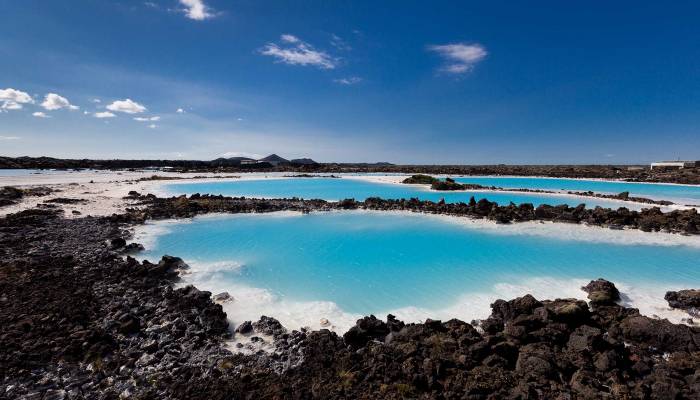
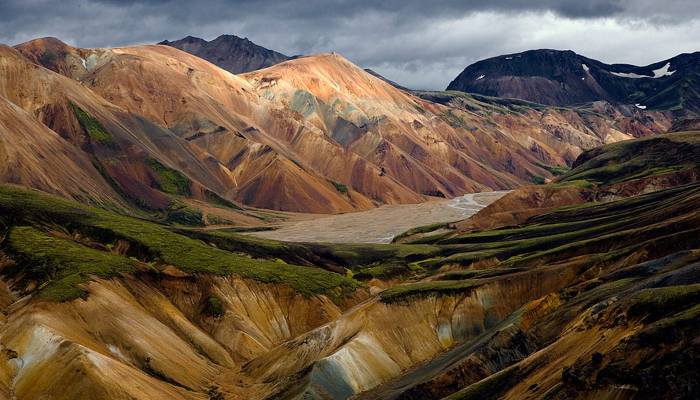
THE GREAT ESCAPE
For centuries, the interior of Iceland was virtually inaccessible, for years at a time playing host only to outlaws in hiding. Via the mountain roads Kjölur and Sprengisandur, the untouched wilderness of Iceland's mountainous centre is now open to the general public—for cautious exploration by foot or 4x4 vehicles—in the summer months.
Surrounded by obsidian and colorful rhyolite mountains, visitors can bathe in natural hot rivers in the geothermal area of Landmannalaugar. From there, the Laugavegur trail leads to the woodland nature reserve Þórsmörk—a hidden valley surrounded by mountains, glaciers and glacial rivers—that serves as a popular base camp for hikers who intend to reach the surrounding highland mountains.
The highlands of Iceland are an untamed mingling of rocky deserts, jagged peaks, volcanoes, ice caps, valleys, and hot springs, that should be explored at all times with respect, care and preparatory measures.
